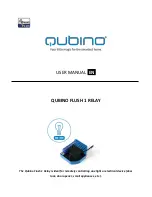
CHAPTER 3: IEC 61850 COMMUNICATION
G2 IMPLEMENTATION MODEL FOR GOOSE CONFIGURATION VIA SCL
UR SERIES – COMMUNICATIONS GUIDE
3-163
3
In practice, a problem with this approach is that it requires the configuration engineers to use as many IED configurators
as there are IED manufactures. As the configurators are from different manufacturers, the engineer needs to learn how to
use each. Another problem is that many IEDs do not handle GOOSE publishing and subscribing in the "Logical nodes
communicate with logical nodes" (that is, end-to-end) paradigm of the standards. Instead inputs and/or outputs are
mapped to and from intermediate objects, such as GGIO using proprietary means, hiding their standardized names and
thus their function from generic configurators.
The purpose of this section is to specify means to use the standards such that a single generic implementation model
compliant Configurator can interoperate with all G2 implementation model-compliant IEDs sufficiently well that
configuration of GOOSE publishing and subscription can be accomplished with moderate effort on the part of the engineer
supervising the process. The means do not require proprietary IED configuration tools for GOOSE configuration. The
method is strictly compliant with the standards, only requiring that some items optional in the standards be either
mandatory or restricted.
3.10.2 Configuration process
The figure shows the SCL file flow in the configuration process under this implementation model.
Figure 3-13: SCL file flow for IED configuration
An ICD file is obtained from each IED. Each ICD file contains a full description of the capabilities of the IED and all of its
factory configuration/settings. Included is a description of all logical node outputs that the IED is able to publish via
GOOSE, and of all logical node inputs that it is able to drive from GOOSE subscriptions.
The Configurator imports system specifications, templates, and all ICD files. At this point, the Configurator has
descriptions of all inputs and all outputs of all IEDs in the project. Various configuration activities occur, including binding of
logical nodes to substation functions. Under the direction of the configuration engineer, the Configurator then determines
which outputs are to connect to which inputs, and determines the GOOSE publish and subscription configuration required
for these connections. The Configurator can for example use the semantics from the standards, logical node to power
system device bindings, and power system device interconnectivity information to prepare for each input a list of likely
output candidates for the engineer to select from. Typically, the complete configuration of the project including all
configuration/settings of all IEDs is saved in an SCD (an acronym for System Configuration Description) file, although that
is outside the scope of this document.
Configurator
ICD
IID
IED
SCD
CID
Temp-
lates
System
spec
859732A1.vsd
Summary of Contents for UR series
Page 5: ...TABLE OF CONTENTS UR SERIES COMMUNICATIONS GUIDE v INDEX...
Page 6: ...vi UR SERIES COMMUNICATIONS GUIDE TABLE OF CONTENTS...
Page 20: ...1 14 UR SERIES COMMUNICATIONS GUIDE FOR FURTHER ASSISTANCE CHAPTER 1 INTRODUCTION 1...
Page 216: ...2 196 UR SERIES COMMUNICATIONS GUIDE MEMORY MAP CHAPTER 2 MODBUS COMMUNICATION 2...
Page 428: ...A 2 UR SERIES COMMUNICATIONS GUIDE REVISION HISTORY APPENDIX A MISCELLANEOUS A...
















































